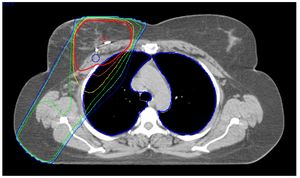Concerns about air safety at Reagan National Airport have intensified following the tragic collision between American Airlines Flight 5342 and a military helicopter on January 29, 2025, which resulted in the loss of 67 lives, including three soldiers and several civilians.
This incident, which marks the deadliest airline crash in the U.S. since 2001, has prompted immediate scrutiny of the airspace around the airport, notorious for its congestion and complexity. Experts have long warned about the potential for catastrophe as commercial and military aircraft share the same airspace, with the conditions around Reagan National described as 'a disaster waiting to happen.'
Even before the fatal crash, pilots flying commercial routes to Washington, D.C., reported numerous near misses characterized by alarming scenarios. A recent review of FAA records indicated at least 10 close calls at Reagan National over the past three years, showcasing the recurrent issue of military helicopters operating dangerously close to passenger jets.
Just before the unfortunate accident, air traffic controllers advised two planes to land near the same runway when one of those planes was about to take off. Similarly, last April, confusion at the tower nearly led to disaster when controllers failed to communicate effectively with multiple aircraft, putting their safety at risk.
Experts point to insufficient staffing as part of the problem. A preliminary FAA report revealed the control tower during the recent collision was understaffed, with one controller performing the duties usually managed by two during peak hours. Ross Aimer, a retired United Airlines captain, lamented, "Those of us who have been around a long time have been yelling...that something like this would happen because our systems are stretched to extremes."
The combination of congested airspace and the operational needs of military helicopters has sparked significant criticism. Senator Josh Hawley (R-Mo.) stated on social media, "I have not yet heard a good reason why military helicopters are doing training exercises in the same airspace as commercial airliners – at night with peak congestion."
The aftermath of the deadly collision has not only raised questions about safety protocols but has also renewed discussions around the necessity of military exercises in the highly trafficked airspace surrounding the nation's capital. Officials are considering suspending such operations until thorough investigations have been completed.
The airspace around Reagan National privileges other nearby air traffic, which presents unique challenges. According to various aviation experts, many more commercial flights are being approved due to eased restrictions placed by Congress last year, raising fears of exacerbated congestion and increased risk of future incidents.
Historical comparisons have been drawn to previous catastrophes. The incident echoes the 1949 disaster where two planes collided over the Potomac River, claiming 55 lives, highlighting the airport’s reputation as one of the most dangerous aviation locations.
Meanwhile, pilots have expressed frustration, noting the recurring theme of near misses due to military helicopters. Data from NASA reflects cases where commercial pilots reported nearly colliding with helicopters as they approached Reagan National. One report emphasized the need for improved separation between landing aircraft and helicopters traversing near the airport’s flight paths.
“What would normally be alarming at any other airport in the country has become commonplace,” highlighted one pilot, signaling the industry’s growing complacency and the urgent need for reevaluation of air traffic practices. The Federal Bureau of Aviation is aware of these safety lapses, yet comprehensive solutions remain to be identified.
With calls for heightened scrutiny and regulations surfacing, the engineering of new protocols could make the airspace around Reagan National safer. There is hope among aviation professionals and lawmakers alike for improved management and preventative measures to guard against the devastating likelihood of another tragic collision.
The recent midair collision at Reagan National Airport is not merely another statistic but serves as powerful impetus for change. The aviation community is demanding action and clarity on the risks involved, as the consequences of oversight can be catastrophic. Until comprehensive safety measures are put in place, the skies above Washington, D.C., will remain fraught with peril, leaving both pilots and passengers uneasy as they navigate this historically and politically significant airspace.



